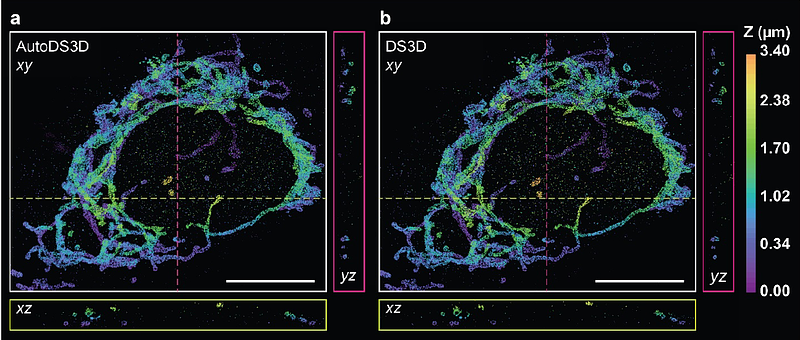One-click image reconstruction in single-molecule localization microscopy via deep learning

One-click image reconstruction in single-molecule localization microscopy via deep learning
Saguy, A.; Xiao, D.; Narayanasamy, K. K.; Nakatani, Y.; Gustavsson, A.-K.; Heilemann, M.; Shechtman, Y.
AbstractDeep neural networks have led to significant advancements in microscopy image generation and analysis. In single-molecule localization based super-resolution microscopy, neural networks are capable of predicting fluorophore positions from high-density emitter data, thus reducing acquisition time, and increasing imaging throughput. However, neural network-based solutions in localization microscopy require intensive human intervention and computation expertise to address the compromise between model performance and its generalization. For example, researchers manually tune parameters to generate training images that are similar to their experimental data; thus, for every change in the experimental conditions, a new training set should be manually tuned, and a new model should be trained. Here, we introduce AutoDS and AutoDS3D, two software programs for reconstruction of single-molecule super-resolution microscopy data that are based on Deep-STORM and DeepSTORM3D, that significantly reduce human intervention from the analysis process by automatically extracting the experimental parameters from the imaging raw data. In the 2D case, AutoDS selects the optimal model for the analysis out of a set of pre-trained models, hence, completely removing user supervision from the process. In the 3D case, we improve the computation efficiency of DeepSTORM3D and integrate the lengthy workflow into a graphic user interface that enables image reconstruction with a single click. Ultimately, we demonstrate superior performance of both pipelines compared to Deep-STORM and DeepSTORM3D for single-molecule imaging data of complex biological samples, while significantly reducing the manual labor and computation time.